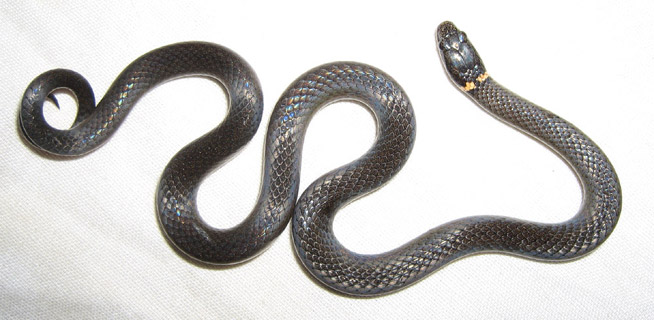
There are thousands of snake species found all over the world; many of them poisonous while many are nonpoisonous. Knowing as much as you can about a particular snake breed is important not only for your safety but for interest’s sake as well. If you live in the state of Florida you may be curious as to what types of snakes are there. One of the most common snakes found in Florida is the Florida ringneck snake.
Biology of the Florida Ringneck Snake:
The ringneck snake is of the Diadophis punctatus family and can be found all over the United States, not just in Florida. It can be found as high up as Canada and into central Mexico. This particular snake is the only species that is found within the genus Diadophis and there are fourteen known subspecies to this snake, however, more calls for research are to be made as different snakes are being found each day. The ringneck snake can be spotted easily as it has a brightly colored ring around the base of its head resembling a ring. The snake can be in many different colors including gray, blue, black and brown.
Appearance: This is a very small, thin snake, totally black, except it has a yellow or red ring around the neck, and it has a bright red belly or underside, in some cases a yellow underside.
Habitat of the Florida Ring neck Snake:
This particular snake prefers several different types of places. Under rocks and in any kind of wet place this snake will be easily found. If you have a wood pile chances are you will be able to find one of these popular snakes. Near streams and rivers are also common places to find this snake. In dryer areas rocks and branches are a common spot for this snake to be spotted. These snakes have a tendency to den together so where you find one snake you will typically come across more of the same breed.
Behavior of the Florida Ringneck Snake:
The ringneck snake is a very passive snake. It does not have an aggressive nature at all and does not seem to mind being handled or approached. If startled the snake will arch and will also flip its tail showing off the coloring at the base of its tail as a warning. The snake has teeth and is also slightly venomous though not to humans. The venom glands are found at the back of the mouth and not in the front. Due to its nocturnal behavior this particular snake does not cause much human problems as it does not come out unless disturbed. If disturbed it will try and get away and not be provoked. The only time this type of snake seems to be a nuisance is in the case of mass colonies. Sometimes this snake can be found in a particularly enjoyable habitat in the hundreds. This can be potentially bad if a person does not like snakes, their property is overrun by them or if the snakes are causing problems with the land. Removal will become necessary. These snakes are also made into great pets as they are non-aggressive and can be quite simple to care for.
Diet of the Florida Ringneck Snake:
The ringneck snake has a broad variety of delicious snacks that they love to eat. Of course the first thing on the menu is anything that is smaller and looks like a great feast. Most commonly on the menu is a worm, salamander, small lizard, frogs, and of course smaller snakes. They may enjoy the occasional grasshopper or other bugs depending on what is readily available according to the habitat they are in at the time of hunger.
Reproductive Life of the Florida Ring neck Snake:
Ringneck snakes can produce during certain times of the year. While spring is the most common time of year some species in the ringneck family including those ring neck’s found in Florida may mate in the fall. A female ringneck will attract her mate by releasing pheromones. The male then finds the female and the mating ritual begins. The female tends to lay her eggs under a rock or under soil somewhere that is loose yet protected. The mother then leaves her eggs behind to hatch on their own. Once the eggs hatch just a few months later they will be juvenile ringnecks capable of taking care of themselves without help from the parental snakes. In general a female ringneck will produce anywhere from eight to ten eggs at time; in some sub species this can be more or less.
Many people want to know how to kill a Florida Ring neck Snake, but you don't need to. The
best way to get rid of Florida Ringneck Snakes is to simply leave them alone. You can also
use a Florida Ringneck Snake trap to catch them - that's one of the best ways for how to
remove Florida Ringneck Snake. For more information, go to my
Snake Removal - How to Get Rid of Snakes home page.
If you need Florida Ringneck Snake removal in your city, I have friends that I have
personally trained in 150 cities.